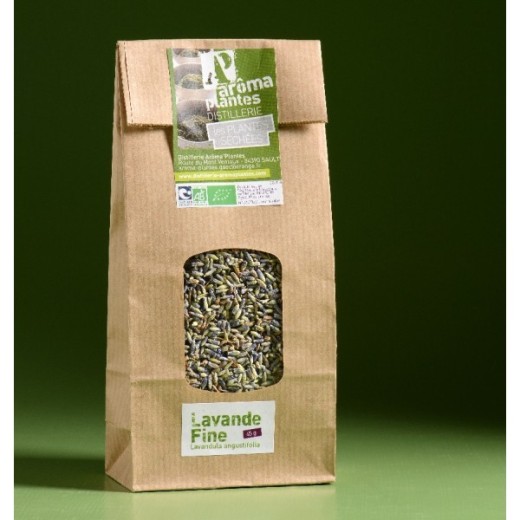

No products in the cart.




![]()
Origin: Aromaplantes
Part of the plant: flowers
Bag of : 45 gr
Lavender is native to the western Mediterranean basin. The ancient Romans already used it to perfume thermal baths and linen. In the 12th century, St Hildegard of Bingen made it a key ingredient in her natural pharmacopoeia, and it was cultivated in monasteries for its therapeutic properties. From the Middle Ages onwards, Lavender was used in Provence to make medicines and perfumes.
Here are some properties of Lavender :
Use a few sprigs with a salad or goat's cheese as a starter. As a main course, with lamb, pork or even chicken. For desserts, Lavender goes perfectly with ice creams, custards, crème brûlées, peach and apricot-based desserts, and in a cupcake icing, for example.
RECIPE: LAVENDER FLOWER MOUSSE
- 1 litre liiquid cream
- 1 level teaspoon organic lavender flowers
- 6 sheets of edible gelatine or 5 g agar-agar
- 200 g caster sugar
Dissolve the gelatine in a little water with the lavender flowers and sugar for 15 mins. Whip the cream until stiff. Mix the whipped cream with the macerated water, flowers and sugar and knead well. Fill small dishes and chill in the fridge. Just before serving, decorate each dish with 2 Lavender seeds. You can serve this mousse with liquid honey or a fruit coulis. Enjoy your meal!
Product from organic farming certified by FR BIO 10 - Agriculture France
Plant for food use
Therapeutic use of plants on medical advice.
- Les Plantes Aromatiques (Claude Gardet, Editions Jean-Paul Gisserot)
- Tisanes : guide pratique pour toute la famille (Dr Claire Laurant-Berthoud, Editions Jouvence)